What to do? Solutions to prevent pipe freezing violate code
Marc Millis
4 years ago
Featured Answer
Sort by:Oldest
Comments (13)
deb s
4 years agobranson4020
4 years agoRelated Discussions
Door threshold hight on Roof Deck: Is this a code violation?
Comments (6)Thanks for all the good comments IâÂÂve considered replacing the door with a window, but decided the door is a good convenience. I am not sure how wind-blown rain would be more of a problem than with the 1/2 inch step than with the current 3-inch step? The threshold is concrete and does slope pretty well and extends out about 8 inches from the door. There is also a storm door that the threshold goes under and extends out about 2 inches past the storm door. So direct rain is not likely to be a problem. Why would wind-driven rain be a problem? There is not likely to be puddling near the door because The slope of the roof is now 1/8 inch per foot, and after the new tapered insulation will be ü inch per foot. Snow is an important point. We have never had a problem before. I suspect that enough heat is escaping from the building through the brick & block walls and door that it rapidly melts any accumulation within say 2 inches of the wall and door. However, anything can happen with ice and snow. I suppose a 2-3 inch high snow or ice pile can prevent drainage and a puddle can build up behind it. Is this what you meant? If so, any solutions?? Worthy, is there a rule about cross-posting? I just looked and couldnâÂÂt find it. If this is a problem, thanks for the warning. In the past, I have done this, if there was no interest in the post, or I realized it would be a better fit in another forum, but waited a longer time before posting in another forum....See MoreBathroom Renovation/Code Violation?
Comments (23)Unlike others, there is no way I'd worry about the location unless I was forced to by a remodel, but that is what is happening so handwringing has to be done. As an aside, my understanding of cabinets around electrical panels is that they are OK as long as clearance requirements are met. That, of course, means that the cabinet is only for the electrical panel, for the most part. Putting a movable rack in front of the panel can't be a building code violation because it is not part of the building. It can be a violation of the stupid code, but I question even that if it can be moved aside with little to no effort. I, as others have expressed, think that putting an outdoor panel on the opposite side is going to be the least expensive solution. My assumption, having lived in several parts of the country, is that outdoor panels are more common in areas where slab homes are more common vs. full basements. If you can't put them in the basement, you put them outside. Nobody wants to take up finished living space with an electrical panel. In the areas that I have experienced, indoor panels have a much longer life than outdoor panels. I hate to see the outside, but it is not an easy choice. Getting an electrician experienced in this very kind of thing is going to tell you if that is the case. Some are more creative than others so cross your fingers. I'd certainly get more than one electrician in. It is very hard to say how much it will cost, but you are not rewiring the whole house. There are going to be, however, some surprises. If you put a new combo main panel/meter pan on the outside, for example, if the mast is not high enough to meet current electrical code, will it have to be raised and how much is that gonna cost?...See MoreDo pipes (water, etc.) freeze under crawl space?
Comments (19)Uhhh GN Builders, apparently, you are in an area where there are basements. That just isnt true in a lot of places. There are a few basements in my area, but, they are very few and very hard to find. Most houses in this area, have a foundation the correct depth into the ground, and a house is built on top of that foundation. There are vents in that foundation, and there is an opening, for a door of sorts into that crawl space. Some houses are really crawl, like belly crawl, some you can hunch over and walk under, and some like mine, you can crawl around on you knees, and not have a problem bumping your head, etc. Yes, the water lines are in that crawl space, and so are heating/coolng duct work. Some even have their hot water heater in the crawl space.The height of the crawl space, depends upon the land the house is built on. Some houses have a very high crawl space on one side, and by the time you get to the other side, it is a belly crawl. It is the way houses are built, and I am guessing, you have no experience with them....See Morenew pipe freezing
Comments (8)With any additional insulating you do, keep in mind that totally enclosing lines in insulation only slows the rate of heat loss; it doesn't necessarily keep them from freezing. I live in a very mild climate where it only freezes for a couple of days a year. However, 2 years ago the cold water line under the kitchen sink froze. It was coming up from the foundation slap and up through an exterior wall. I cut a 1' X 1' hole in the sheetrock under the sink to investigate. What I found was a fully insulated wall, with the copper pipe coming up through the middle of an insulation batt. However, I noticed a breeze blowing through there due to an inadequately sealed sill, and it was enough to freeze the 2' of copper pipe. My solution was to seal the sill as best as I could and rearrange the insulation so that it was all behind the pipe (that is, to the outside) leaving the pipe bare to the inside. Then I put a grille in place to seal the hole, which allows the pipe to be able to pick up a little heat from the kitchen side through the louvers....See Moreapple_pie_order
4 years agolast modified: 4 years agoyvonnecmartin
4 years agoerinsean
4 years agoGN Builders L.L.C
4 years agoJAN MOYER
4 years agoJake The Wonderdog
4 years agoMarc Millis
4 years agogreg_2015
4 years agoMarc Millis
4 years agoJake The Wonderdog
4 years ago
Related Stories
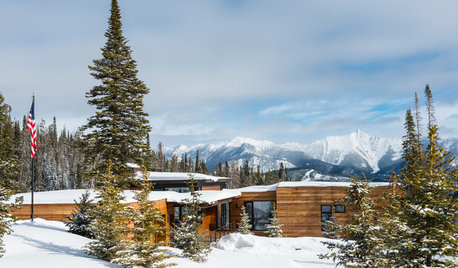
HOUSEKEEPINGWhat to Do When Your Pipes Freeze
Here’s how to thaw frozen pipes and avoid having them freeze in the future
Full Story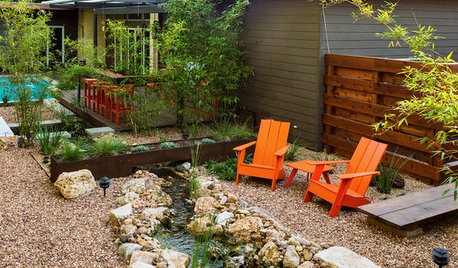
LANDSCAPE DESIGN4 Gardens With Creative, Earth-Friendly Drainage Solutions
See how designers have made the most of site conditions to manage runoff, catch rainwater and more
Full Story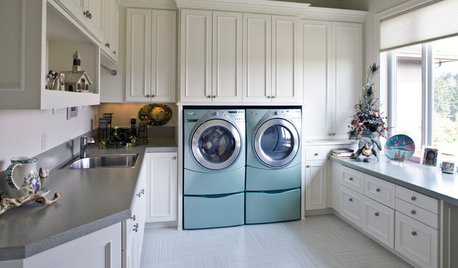
LAUNDRY ROOMSOne of the Biggest Building-Code Offenders in the Laundry Room
A dryer vent specialist shares what to do — and what to avoid — to keep things safe and efficient
Full Story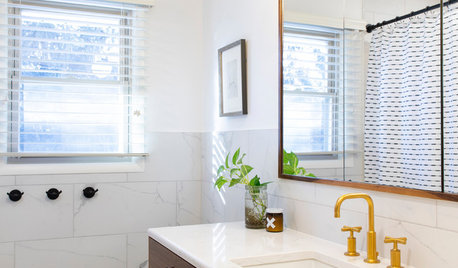
SMALL SPACES5 Solutions to Small-Bathroom Problems
Whether your room lacks a separate shower, adequate storage or a sense of spaciousness, there are remedies at hand
Full Story
CONTRACTOR TIPSBuilding Permits: 10 Critical Code Requirements for Every Project
In Part 3 of our series examining the building permit process, we highlight 10 code requirements you should never ignore
Full Story
GARDENING GUIDES10 Solutions for Soggy Soil
If a too-wet garden is raining on your parade, try these water-loving plants and other ideas for handling all of that H2O
Full Story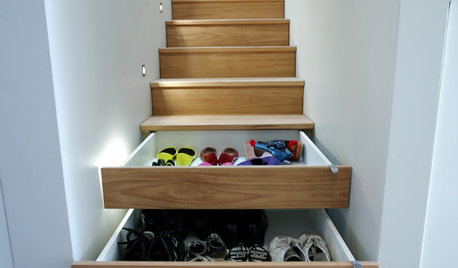
ORGANIZINGConquer Clutter With Drawers: 14 Inventive Solutions
Organize, neaten and hide all your stuff with drawers in unexpected spots or outfitted with extra-special features
Full Story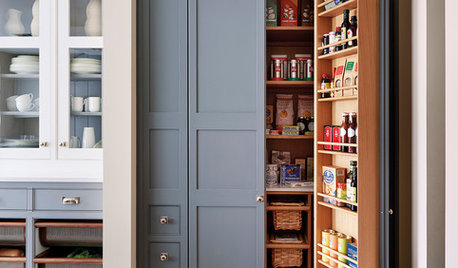
MOST POPULAR10 Storage Solutions for Kitchens With Character
A perfectly designed kitchen cabinet is a wonderful thing, but so are these clever alternative storage ideas
Full Story
CONTRACTOR TIPSBuilding Permits: What to Know About Green Building and Energy Codes
In Part 4 of our series examining the residential permit process, we review typical green building and energy code requirements
Full Story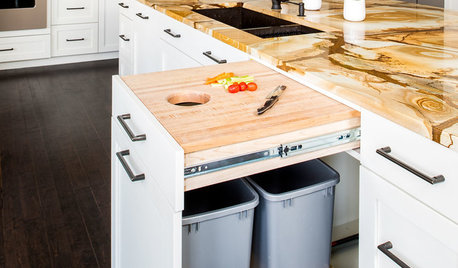
MOST POPULAROur Favorite Kitchen Storage Ideas Now
Make the most of every square inch with these clever cabinetry solutions
Full Story





greg_2015